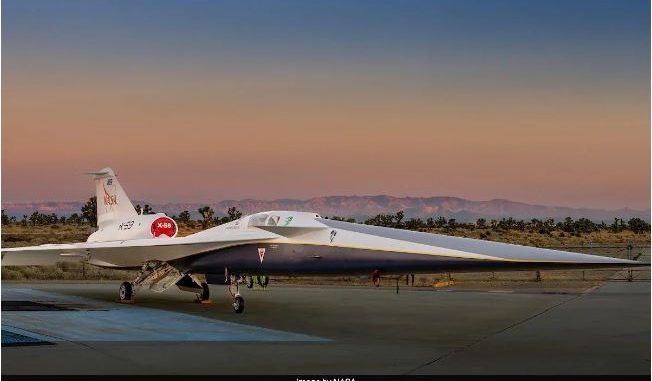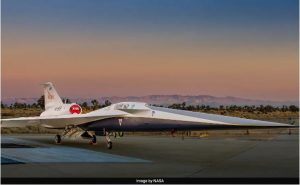
NASA Unveils Cutting-Edge Aircraft Promising Supersonic Travel.

NASA has unveiled the X-59, a groundbreaking experimental aircraft designed to revolutionize commercial supersonic travel.
Jointly developed with Lockheed Martin Skunk Works in Palmdale, California, the aircraft is set to debut with a predicted top speed of 1.4 times the speed of sound, equivalent to 1,488 kilometers per hour.
This announcement aligns with NASA’s ambition to make supersonic travel commercially viable and overcome regulatory restrictions.
The X-59’s distinctive design incorporates a thin, tapered nose, accounting for roughly one-third of its total length. This innovative feature aims to deflect shock waves that typically create disruptive sonic booms around traditional supersonic planes. With a length of 99.7 feet and a breadth of 29.5 feet, the X-59 introduces unique modifications for improved supersonic performance. The absence of forward-facing windows, a cockpit positioned midway along the aircraft’s length, and a top-mounted engine contribute to its streamlined design.
In a tweet, Lockheed Martin highlighted the X-59’s transformative potential, emphasizing its ability to minimize the typical sonic boom, thereby enabling commercial supersonic flights over land—a practice prohibited since 1973.
NASA Deputy Administrator Pam Melroy expressed her enthusiasm for the project, stating, “NASA’s X-59 will help change the way we travel, bringing us closer together in much less time.” The aircraft’s first flight is scheduled later this year, accompanied by its inaugural quiet supersonic flight.
The X-59 is integral to NASA’s Quest mission, which seeks to gather data for regulators to reconsider longstanding regulations preventing commercial supersonic flights over land. The project addresses concerns about the disruptive impact of loud sonic booms on local communities.
After completing flight testing, NASA plans to fly the X-59 over selected U.S. cities to collect public feedback on the aircraft’s sound. The data will be shared with the Federal Aviation Administration and international regulators.
Bob Pearce, NASA’s Associate Administrator for Aeronautics Research Mission, emphasized the significance of the X-59’s design, stating, “Our laboratory studies would say yes, but the real answer can only be found by engaging the people who would hear it during daily life.”
The X-59 promises not only speed but also a quieter, more sustainable future for air travel.
Stay tuned for updates on the X-59’s groundbreaking journey.





Leave a Reply